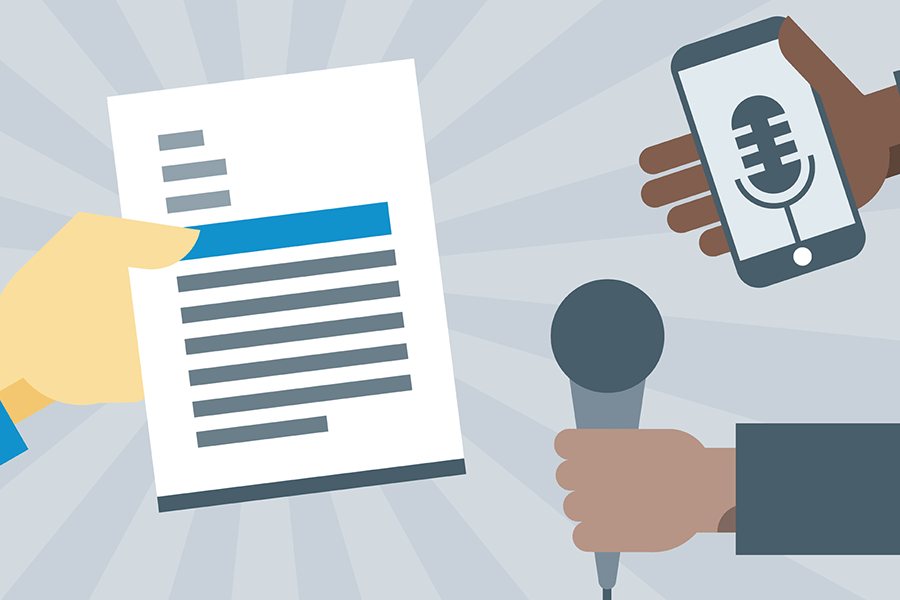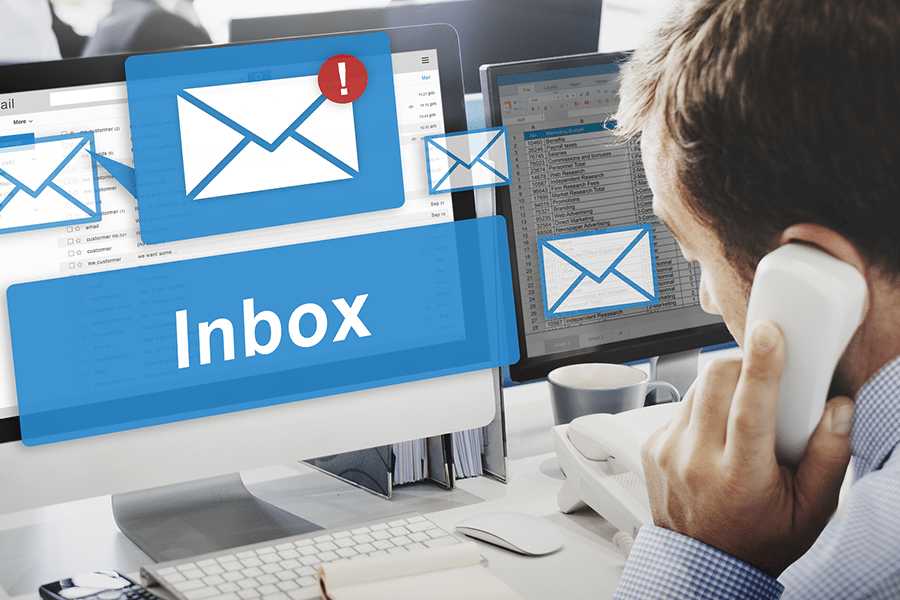
Knowing how to send a press release correctly can make the difference between getting published in dozens of media outlets or getting sent straight to journalists’ spam folders. Still, press releases are one of the most established PR practices to get the word out about your business, and they’re still effective today, with the right practices. Here, we’ll go through the process of how to submit a press release in six steps.
Step 1: Write & Format Your Press Release Correctly
Before knowing how to send out a press release, the first thing to ensure is that it’s up to standards, content and formatting-wise. Journalists receive hundreds of press releases and pitches in their inboxes daily, and for yours to be taken seriously, it needs to be well-written and formatted according to industry standards.
To write your press release effectively, start by identifying a newsworthy angle. Your story should be interesting and relevant to your intended target audience—this is your best guarantee of getting picked up by your target media contacts. Keep your press release story concise, clear, and compelling.
Then, format your press release following proper press release formatting, which includes a header, body, boilerplate, and more.
An example of proper press release formatting
Following proper formatting is important as journalists expect to see press releases in a certain standard and format, and not adhering to it makes your press release look unprofessional. It can cost your chances of getting published and growing your brand presence. To learn more, read our step-by-step guide on how to write a press release, which also has a free template.
If you want to leave your press release to media professionals instead to ensure it’s up to industry standards, there are many press release services that can help. Our top recommendation for small businesses is EIN Presswire—its PR professionals can write, format, and send your story to thousands of news outlets. It’s also one of the most affordable services starting at $99.95.
Step 2: Build a Media Contact List
An important part of learning how to submit a press release to local media is building your media contact list. This is a list of all the media professionals you’ll send your press release to. It’s important because when sending out a press release, you want to be sure that it reaches the journalists whose audience is also your target audience. You don’t want to send your restaurant’s opening press release to sports journalists, for instance.
There are two parts to building your media contact list: researching media outlets’ audiences and then compiling your actual contact list. Find more about them below:
Research Media Outlets’ Audiences
Ideally, you want your press release to fit in as organically as possible with the rest of your target media publications’ content, which is why researching their audiences is a key step in sending a press release.
When researching media outlets’ audiences, note if their demographics, interests, and behaviors align with those of your business’s target audience. You can research these via free site checkers like SimilarWeb that offer data on websites’ audiences, or by looking at publications’ engaged followers on social media. These data give you insight into the type of people media outlets write for and if they’re a good fit for your business.
Here’s an example of fitsmallbusiness.com’s audience demographics as seen through SimilarWeb.
Build Your Media Contact List
Then, after researching your media outlets’ audiences, the next step is to compile the most relevant ones into a media contact list. You can do this by creating a spreadsheet with columns for the media outlets along with their contact person and contact details, key data about their audience, and submission guidelines if they have any (for example, word counts or link limits).
You can usually find publications’ media contacts on their website along with their contact information. If that doesn’t work, try LinkedIn or call the publication to request their contact info. Here are some other sources where you can find journalists’ contact information:
- Traditional news outlets: A traditional news agency is a newspaper, magazine, television channel, radio station, and associated websites. Many list the names of the editorial staff, including email addresses, or offer web forms for online submissions.
- Trade publications: Many industries have digital and print trade publication magazines that regularly cover industry-related news. You can search for relevant trade publications on Google and then look for their submission guidelines and writers.
- Journalists: Many journalists have their own websites or accounts on publishing platforms like Medium and Substack. You can search on these platforms to find journalists who cover stories in your industry or write for audiences similar to yours.
- Non-traditional news sources: These can include Facebook groups, bloggers, business networking organizations, social media influencers, and other digital groups. While these may not be official news outlets, they are often effective at getting the word out about business news.
You can also use an email finder tool like Hunter.io to locate the email addresses of journalists you want to contact. These tools scour the internet for publicly listed contact information.
Step 3: Write Your Email Pitch
Knowing how to send a press release via email also includes knowing how to craft an email pitch. Your email pitch is the first thing journalists will read before they even open your press release, which is why it also needs to be well-written and impactful.
Your pitch should explain who you are, what your business does, and a few key details about your story and why it matters to their audience (aka its angle). Tonally, it should be knowledgeable and friendly, but professional and polite. You’re presenting yourself as a source, not as a salesperson. To help you get started, we prepared a pitch template you can use below:
Dear [Journalist’s Name],
My name is [your name], and I am sending this email on behalf of [company]. I am writing to share a press release with you regarding [topic of press release] to be released on [release date]. You can read the release below.
This news is important to your audience because [offer a compelling statistic or reason why this would directly affect the journalist’s audience].
Would you share this news with your audience so they can [include an action like attending the event you’re hosting or buying your book, or how they can benefit from learning about your story]?
Please don’t hesitate to contact me directly if you have further questions about this story.
Thank you for your consideration.
[Your Full Name] and [Professional Title]
[Your Phone Number]
[Your Email Address]
[Your Press Release]
Use the template above as a starting point, then tailor it to the journalists or media outlets you’re pitching to. For instance, if you’ve been following a journalist for a while and think your story is a perfect fit for their writing, explain why (concisely) in your pitch. Journalists receive dozens of press release emails every day—avoid being generic to help yours stand out.
Step 4: Send Your Press Release
After writing your press release, building a contact list, and crafting your email pitch, the next step is to send it out to the press. The best way to do this is via press release distribution services, as they already have contacts with hundreds of journalists and media outlets and are your best guarantee of getting at least a few placements.
Here are some of the best press release distribution services for small businesses:
With these platforms, you’ll only need to select a provider and plan, a release date, and a target audience (an industry, location, or demographic, for example). Then, upload your release and multimedia, select any additional services you want (e.g., direct-to-journalist emails), and complete the checkout process. The service’s in-house PR professionals will handle the rest of the distribution.
Another way to send your press releases is by emailing them out manually. However, this can often be time-consuming and less credible than going with a distribution service. If you choose to send manually, use your email pitch as the body of your email, and then send it out to the media contacts you compiled in step two. Make sure to tailor your pitches to each contact so your email doesn’t come off sounding too generic.
Learning how to send press releases also involves knowing the right timing. This is because the best time to submit press releases varies with media outlets and press release types. For instance, you can usually send press releases to news outlets a few days before publication, while trade publications only accept them months in advance.
Here are some general tips for how far in advance to send a press release to different media outlets:
- Traditional media outlets (print, radio, TV): Send your press release about a week in advance, if possible.
- Online media: Just as with traditional outlets, send a week ahead.
- Trade publications: Send your story three to six months ahead.
- Journalists, bloggers, and social influencers: If you want to invite them to an event, send a media advisory two or three weeks before. Then, send your press release about a week in advance.
Meanwhile, here are the optimal sending times for different types of press release announcements:
- Awards announcements: Send as soon as the award is announced publicly.
- New business opening or a new product or service launch: Send two to three weeks in advance.
- Book launch announcements: Send one to two months before the launch date. Then, follow up afterward with a post-launch press release.
- Crisis press releases or trending topics: Send them immediately.
- Event press releases: Depending on the nature of the occasion and how much time guests and media would need to prepare, you might send your press release months, weeks, or days in advance.
- New hire press release: Send one to four weeks before the new hire’s start date or just after a prominent new hire has been made.
- Partnerships, acquisitions, and mergers: Send a week in advance to the media with a “HOLD FOR EMBARGO” release date timed to when you want your news to go public.
Find out more about the press releases above and how to write them in our guide to the different press release types.
Pro tip: The best time to submit a press release email is between 10 a.m. and 2 p.m. on weekdays, especially Thursdays. That’s when editors open most of their emails, according to studies by Prowly. Find out more press release distribution tips to maximize your press release’s impact.
Step 5: Track Your Press Release Performance via Analytics
Knowing how to submit a press release doesn’t end the moment you send it off to media outlets. You’ll also need to monitor if it was picked up and published on news sites. If you emailed your story directly to journalists, you may have received responses, or you can check how many recipients opened your email, visited a page on your website, or clicked a link.
Beyond how many placements your story received, there are other analytics you can keep track of to measure your press release’s success. Some of these include:
- The number of backlinks your press release earned (aka how many people clicked back to your website from your press release)
- Which websites linked back to yours
- How much website traffic your press release produced
- How many people it converted
You can get this data and more from your press release distribution service, usually via an analytics dashboard. However, if you need more help, you can use tools like Semrush, which can check how many backlinks your published press releases earned.
After your press release is published, one way to go the extra mile and boost its exposure further is to share your published press releases with your network on social media. This can be as simple as sharing the link to your published story on your Facebook and LinkedIn pages. You can also get creative and experiment with different content formats for different social platforms.
For example, turn your press release into infographics to post on Instagram, or create videos for YouTube and TikTok. You can also share its links in your email newsletters.
Another option is to host your press release on your website, usually on a dedicated “Press” page alongside your brand’s press kit. This not only keeps your press release visible to the public but also increases your SEO—and your credibility to site visitors.
Here’s an excellent example from Canva on how to share your press release creatively via Instagram. (Source: Instagram)
Meanwhile, here’s an example of press releases hosted on a company website from TechnologyAdvice. (Source: TechnologyAdvice.com)
That sums up the steps of how to send a press release to media outlets. Following the proper process and industry formatting is your best chance at getting your news story picked up, and ultimately getting good exposure for your business.
Frequently Asked Questions (FAQs)
The best way to submit a press release to Google News is by using a press release distribution service that includes Google News in their distribution cycles, like EIN Presswire or Newswire. However, distributing your story to Google News does not guarantee its placement, as Google’s algorithm still decides whether or not to publish it. If you already have a press release that’s already published, you can share it on Google News via Google’s Publisher Center.
The best way to send press releases is through a press release distribution service like EIN Presswire or eReleases. These services have media professionals who can distribute your press release to thousands of news and media outlets. They can guarantee that your story reaches journalists’ inboxes.
Yes. You can send your press releases by manually building a contact list of journalists and media outlets and crafting your own email pitch. Research journalists’ contact info via websites or email finder tools, then compile them into a spreadsheet and email them individually. However, because this can be time-consuming and labor-intensive, we recommend partnering with a press release distribution service instead for a more efficient and effective process.
Bottom Line
Learning how to send a press release the right way is a win-win situation. You get the exposure you need for your story—and your business—and journalists get relevant stories to write for their audience. The good news is it’s a simple process: after writing and formatting your press release, build your media contact list, write your email pitch, and send your press release. After sending, track its performance and share your published story with your network.
When it’s time to send your press release, the best way is via a press release distribution service. For small businesses or beginners, the service we recommend is EIN Presswire as it’s both affordable and wide-reaching. For less than $100, your story can get sent to thousands of major media outlets.





